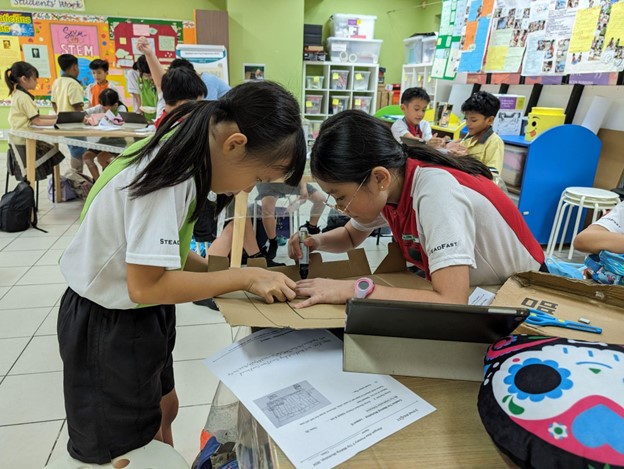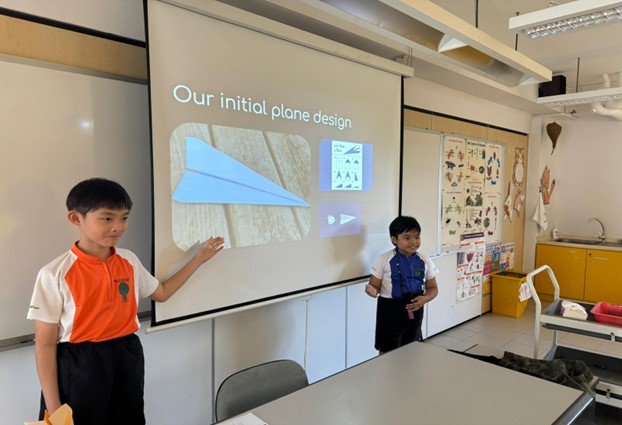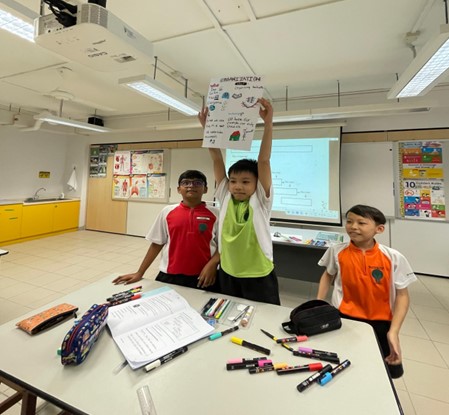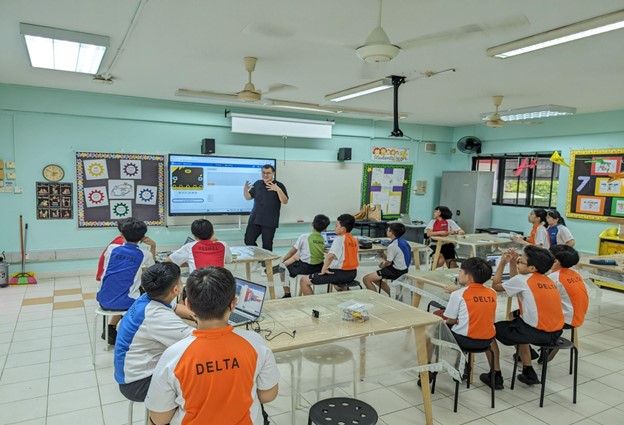Accelerated Programme to Enhance Students' eXperience (APEX)
Math and Science Thinking and Inquiry-based Programmes
Students are engaged in various Math and Science activities that include STEM (Science, Technology, Engineering and Mathematics), Excellence 2000 (E2K) and Design Thinking. These activities aim to deepen students’ conceptual understanding and reasoning skills through an inquiry approach. Students are given opportunities to collaborate with their peers and engage in problem-solving and scientific thinking.
Sony Toy Creative (Primary 3)

In this programme, students learn to design and build their own unique toy in pairs. They will be introduced to the Sony Creative Science Award Toy Competition and learn how to incorporate science concepts into their toy designs. Throughout the workshop, students will brainstorm ideas, plan materials, and learn basic toy-making skills using various tools and recycled materials. They will have the opportunity to test and refine their toys, present them to their peers, and receive feedback for further improvements. By the end of the programme, students would have completed their toys and journals for submission to the competition.
Amazing Fly Machine (Primary 4)

In this programme, students will get hands-on experience to learn about the science of flight and prepare for the Amazing Flying Machine Competition held by the Science Centre. They will be introduced to the different forces that act on an airplane, such as thrust, lift, drag, and gravity. They will also learn about the different parts of an airplane and how they work together to create flight. Students will then apply this knowledge by folding different types of paper airplanes and testing how they fly. They will experiment with different designs and make modifications to improve their planes' performance. The course will culminate in a competition where students will showcase their best paper airplane designs.
Innovation Programme (Primary 5)

In the Innovation Programme (IvP), students embark on a journey of problem-solving, tapping on their creativity. They begin by exploring the background of a real-world issue, gathering comprehensive data to understand its context. Next, they frame the problem, identifying its root causes and establishing a strong foundation for their project. With a clear understanding in place, they brainstorm a wide range of potential solutions, striving for unique and inventive ideas. They then evaluate these ideas, using carefully selected criteria to determine their effectiveness in addressing the problem. The chosen solution is then transformed into a prototype, which is iteratively refined and improved. Finally, students test their prototype, collecting valuable feedback and data to further enhance their creation. This entire process culminates in the presentation of a 3D prototype and a comprehensive slide deck, showcasing their innovative solution and the journey they took to arrive at it.
Scientists-in-School Programme (Primary 6)

Under Dr. Zhou Jun's (A*Star) expert guidance, P6 APEX students have been
delving into the captivating realm of artificial intelligence (AI). They
explored the potential of AI in everyday life and embarked on a project
to create an AI-powered application that automates student attendance using
facial recognition. The students had the opportunity to share their projects
with the school this term. Imagine the possibilities – classrooms transformed
by cutting-edge technology, fostering a culture of innovation and exploration!
Click here to read more.
Broadcast Journalism
In alignment with our commitment to foster 21st-century competencies and further develop the talents and proficiencies of our students, the English Department conducted a Broadcast Journalism module as part of its Oracy Package for Primary 3 and 4 students. The primary objective of this programme was to enrich the oracy skills of our students through immersive learning experiences and hands-on practice.
Throughout the programme, students acquired valuable presentation skills, including effective verbal and non-verbal communication techniques, and the ability to speak with confidence, incorporating voice projection, clear articulation, and intonation.

